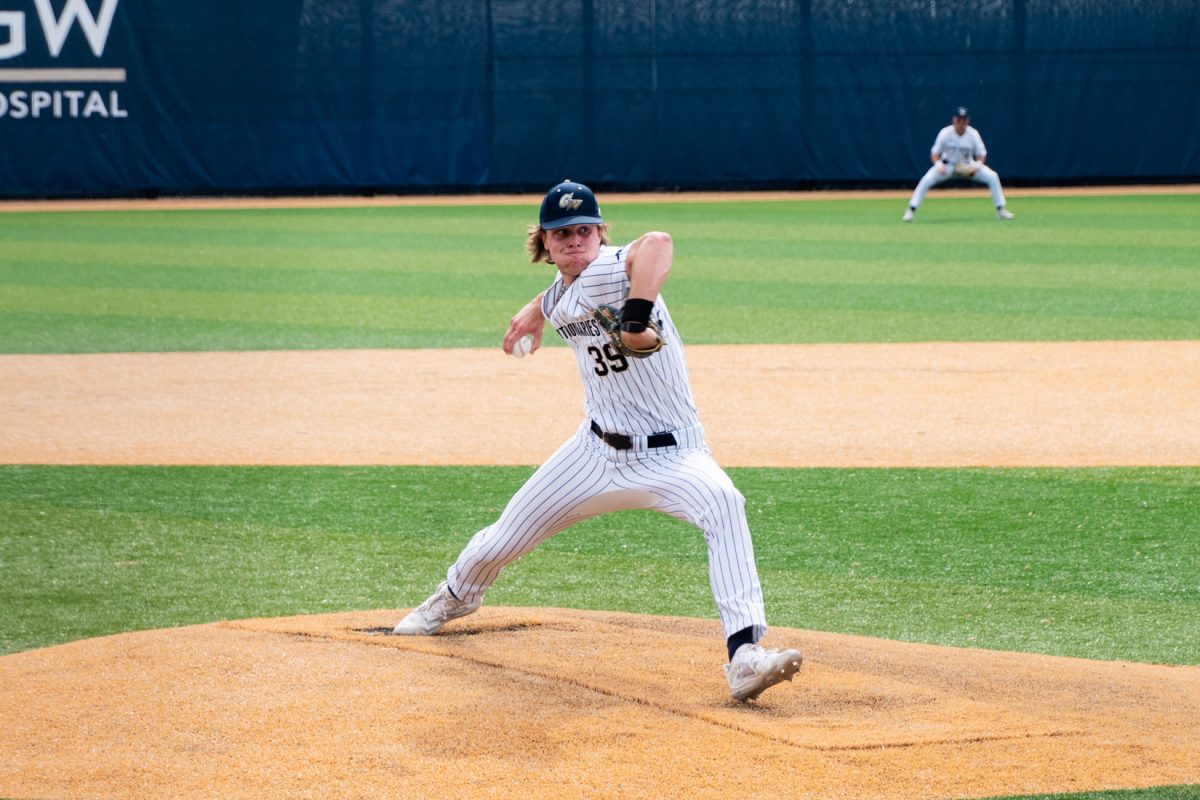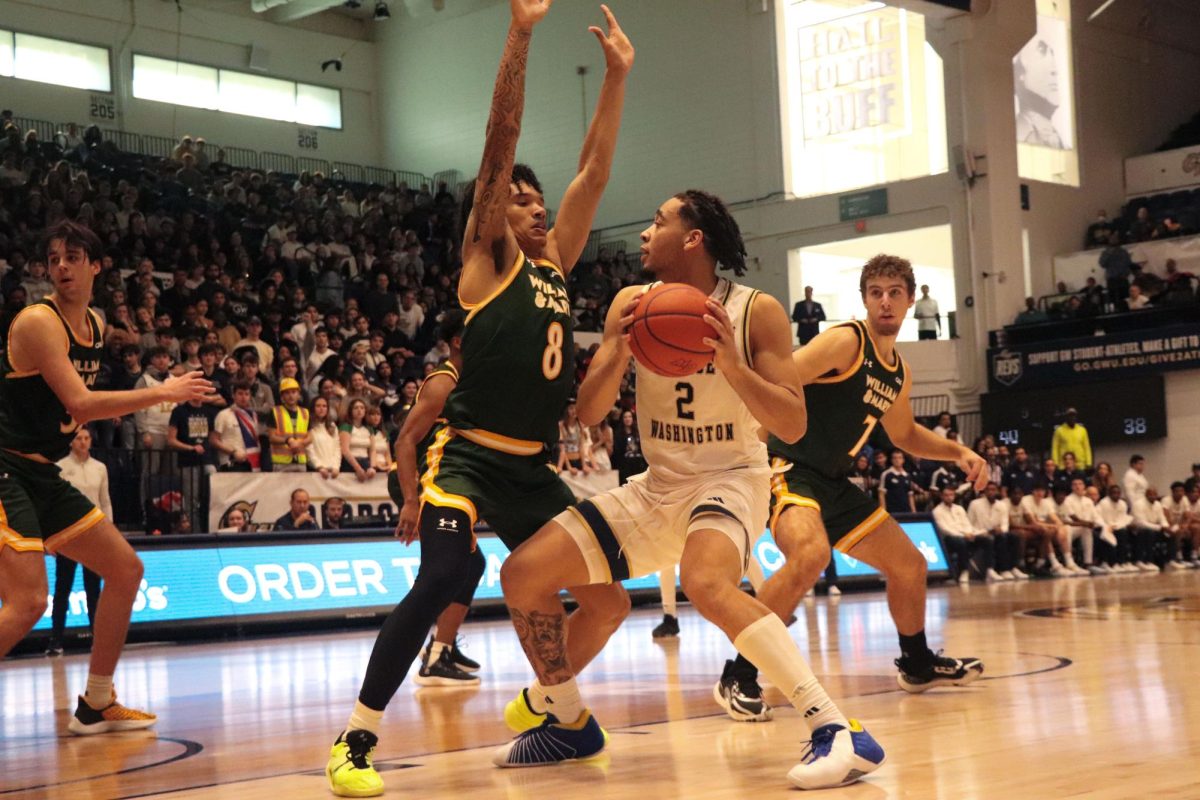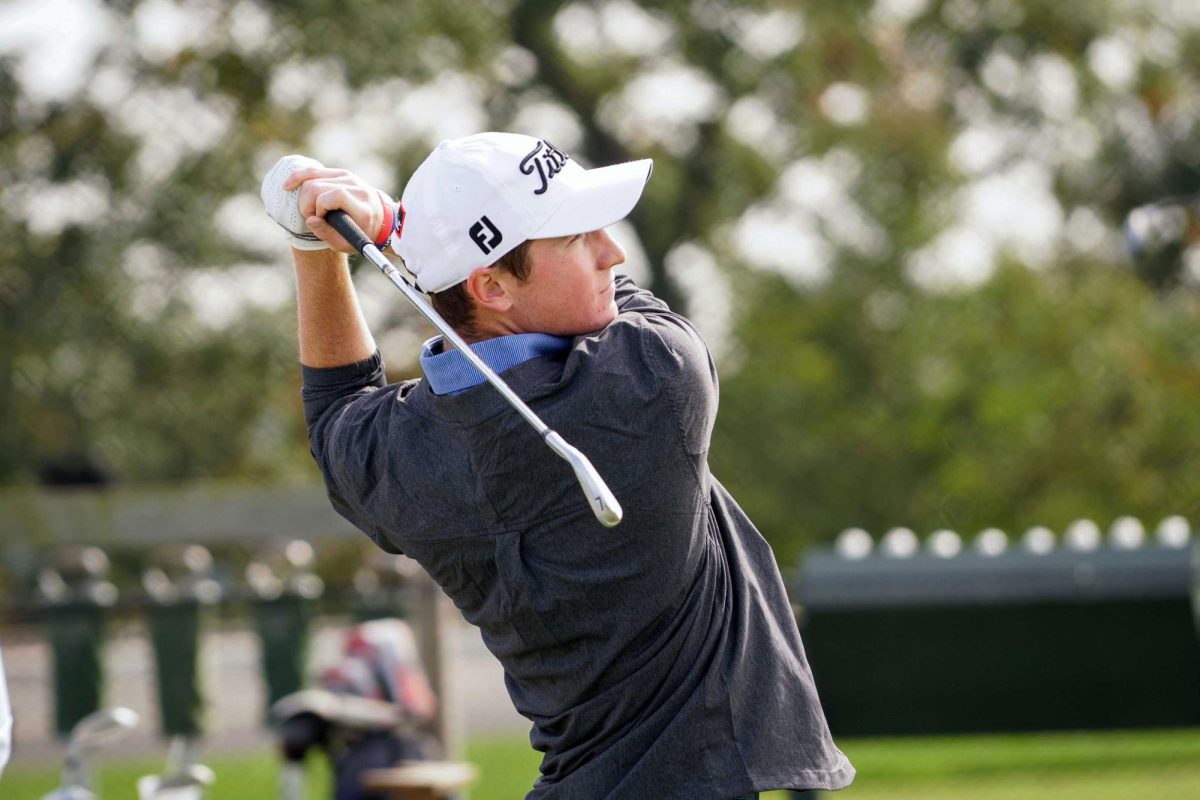In a youth’s first days of playing basketball, it is not uncommon to sit at the free throw line, 15 feet from the hoop, shooting the unguarded shot. With this being the case, one would think that making free throws would be all but guaranteed at the upper levels of play.
For numerous reasons, however, foul shooting remains a weak point of many players’ games. As a result, free throw shooting is one of the most emphasized aspects of basketball practices, and coaches are always trying to find ways to improve their players’ performance from the line.
No team should be more aware of the importance of good free throw shooting than No. 14/15 (AP/USA Today) GW, which made just four of 16 free throws in its loss to Georgia Tech last year in the first round of the NCAA Tournament.
“It was disheartening to play well enough to put us in the position to win, but we just couldn’t make the free throws,” GW men’s coach Karl Hobbs said after practice Monday. “I don’t know if it was the fact that it was the NCAA tournament and we weren’t used to the atmosphere, but I’m hoping that’s where our experience will pay off if we’re in that situation this year.”
Free-throw shooting continues to be a glaring weak spot in a much improved and powerful GW men’s basketball team. The Colonials’ struggles have continued this season; going into Wednesday night’s game against Duquesne they were shooting just 64.5 percent from the line as a team, placing them 12th in the Atlantic 10 and outside of the top 100 in Division I college basketball.
Fortunately, their opponents as of Wednesday afternoon were shooting just 63.9 percent from the line, so GW’s struggles have not cost them significantly thus far.
Against better teams, especially on the road during conference games, making free throws is essential. In the past few games, GW has been clutch from the line late in games, making it difficult for opponents to sustain comebacks against them. Hobbs postulated that during the last three minutes of games, roughly 70 percent of points are scored via the foul shot.
“With the exception of Stony Brook, the difference in all of our league games has been that we’ve been able to make free throws down the stretch,” Hobbs said. “In the Temple game, (sophomore) Maureece (Rice) came in, hit four free throws and the game was over. Against Saint Louis, every free throw was critical and against Charlotte, the coach got a technical, we made four free throws and that put the game out of reach. If we miss some of those free throws and they come down and hit some shots, it’s a whole different ball game.”
Rice, whose 82.1 percentage from the line leads the team, is quickly becoming the team’s go-to guy late. He also uses the line as a way of getting his touch back if he is having a bad day shooting from other areas on the court.
Although many players would deny being affected by pressure and opposing fans’ attempts at distraction, Rice admits they do make a difference.
“I try to stay focused, but with the crowd making a lot of noise and trying to throw you off, it shakes your confidence, and focusing on the line is more difficult than it is at home,” he said.
In order to limit the impact of outside influences on shooting, Hobbs emphasizes routine and focus. Every free throw a player takes, whether during practice or game, is done with the same routine: usually a certain number of dribbles, then a shot.
Senior center/forward Pops Mensah-Bonsu, for instance, spins the ball, says a prayer for one of his former coaches, blows on his hands and then finally takes three dribbles before each one of the “couple hundred” free throws he takes every day.
Junior guard Danilo (J.R.) Pinnock holds up three fingers before his shots, one for his father, his son and himself, all of whom share his first name.
Additionally, Hobbs tries to put as much pressure on players during practice as possible by forcing them or their teammates to do pushups or wind sprints if they are not successful.
This way, a player needing to make some important free throws in a real-game environment will be used to the pressure and just have to follow the same routine he used when he was successful in practice.
If someone gets in a funk from the line, Hobbs brings them back to the basics, instructing them to “just relax and focus on the rim” in order to take the mental aspect of shooting out of the equation as much as possible.
Mensah-Bonsu, who is shooting just 46.8 percent from the line this season, as of Wednesday, attributed his poor performance to mental errors as opposed to sub-par form, noting that the ones he does make are good makes; that is, they do not appear to go in simply because of a lucky bounce. Against Duquesne, Mensah-Bonsu was 9-for-14.
“It’s all mental,” Mensah-Bonsu said. “I just have to make sure I concentrate at the line, sometimes it’s a lack of concentration. That’s the reason I think I miss them. So far I’ve been a little off, but I’m going to pick it up.”







